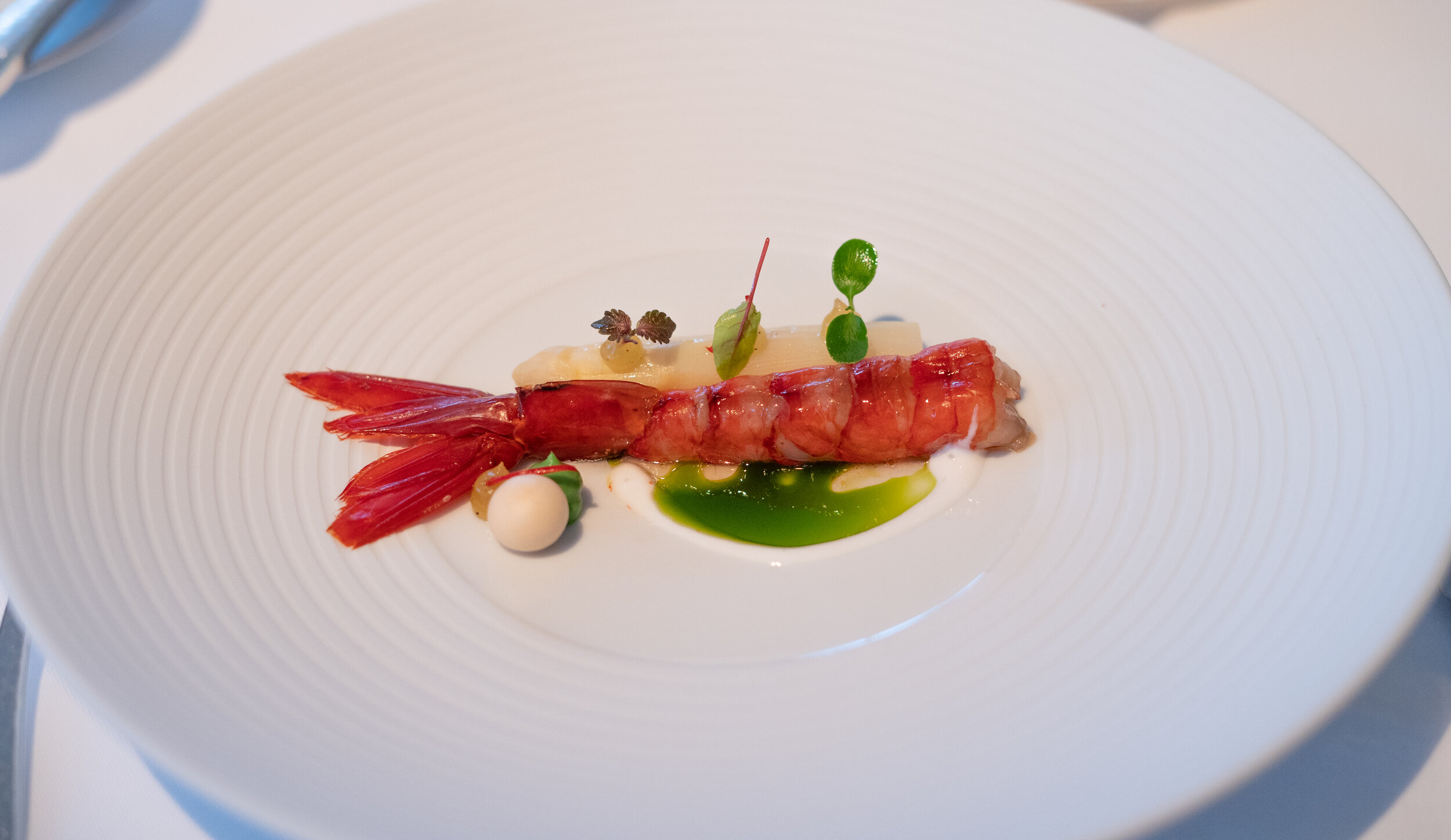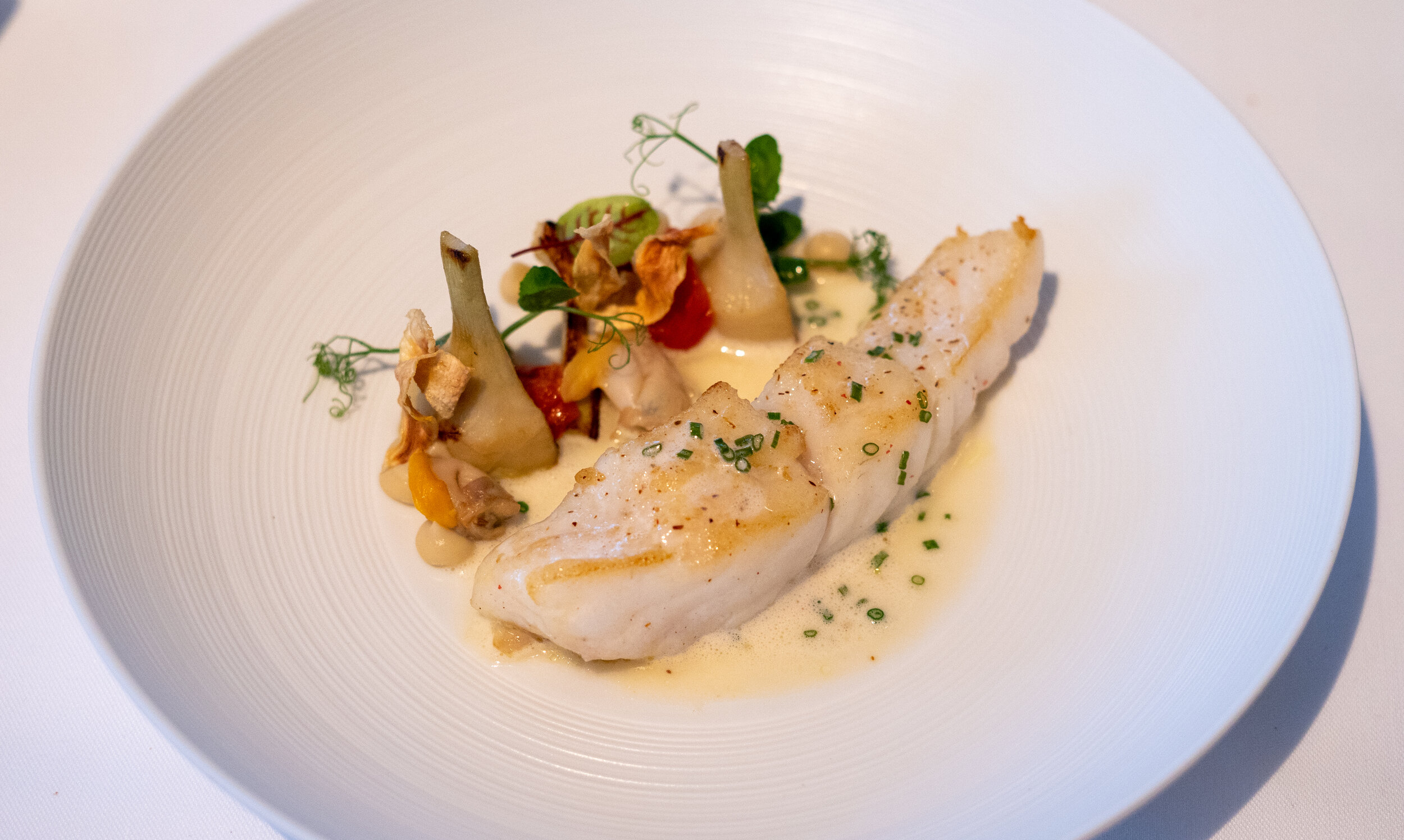Gästehaus Klaus Erfort
Gästehaus Klaus Erfort Review at-a-glance
Awards: 3 Michelin star, 19.5 Gault Millau
+Ticks the box if you have a longing for some classical cooking at a reasonable (for a restaurant at this level) price
-Both the food and setting lack the wow factor you’d expect from a 3 Michelin star restaurant
-Service was a bit disjointed with servers stretched thinner than you’d expect for a restaurant of this caliber
Rating: 90/100
Verdict: Three stars creates certain expectations for a restaurant. Saying a restaurant is “worth a special journey” should. Gästehaus Klaus Erfort is a very good restaurant. It costs less than a typical three star, located in a (relatively) modest setting, and served precise classical cooking. But didn’t feel like a three star experience. The service was a little spotty and the food, while well prepared, lacked wow factor. Worth a visit but not a special journey.
Cost: €147
Value: 16/20
Gästehaus Klaus Erfort Background
Klaus Erfort’s eponymous restaurant is perhaps the most unassuming of the 3 stars in Germany, set in the town of Saarbrücken which is not exactly a tourist hotspot. While you are unlikely to be visiting Saarbrücken for leisure anytime soon, it is not far from the Mosel wine region of Germany where you can taste some wonderful Rieslings while overlooking the vineyards and river. I visited when in the area visiting Victors Fine Dining and Luxembourg.
The building itself is in a converted townhouse, the dining room having high ceilings, wood floor and very well-spaced tables. The end result is a pleasant place to eat dinner but certainly not as striking as say, the luxury dining room of Cheval Blanc or modern look of Troisgros. Perhaps as a result of its off the beaten track location, the restaurant appears to cater to a mostly local crowd with no English menu in sight and many of the servers not knowing the English translations of the dishes.
Despite little acclaim outside of Germany, the guides love Klaus Erfort’s cooking with both Michelin and Gault Millau giving him their highest accolades. Erfort’s cooking, like many of the 3-stars in Germany, is decidedly classical french. The meal followed a pretty normal progression with the cooking being technically precise but lacking much creativity or surprise.
Pricing at Gästehaus Klaus Erfort is generous for dinner at a 3 star, with 4-courses ringing in at €147, 5 at €172 and the full menu costing €205, below the lengthy tasting menus at any of the other German 3 stars. I went with four courses and did not venture into the wine list but it seemed to have a good selection, coming in at some 30 odd pages and offering similar value as the food pricing structure.
Review of what I ate at Gästehaus Klaus Erfort
The meal at Gästehaus Klaus Erfort got off to a bit of a bumpy start. The first indicator that the staff was stretched quite thin was right at the beginning when no one was at the door to greet guests. After milling about aimlessly for a few minutes someone walked by with food and said they would come back to show me to my table. After sitting down a trio of amuse bouche’s were dropped off with no explanation - it appeared to be a bit of a language gap as the server said someone would come by and explain them in English but no one ever did. The same server later dropped off the bread with nary an explanation. Ignoring the poor form, the amuses were fine enough. As always I was drawn to the one featuring foie gras, in this case, a little terrine sandwich that had a nice deep flavor.
The nibbles were followed by a more substantial millefeuille of foie gras, celery, avocado, and raw shrimp with nori marmalade and coriander vinaigrette which clearly drew its inspiration from the famed amuse at L’Astrance in Paris. It tasted good enough but lacked balanced as the foie gras got lost in all the other components, the avocado being particularly dominant and the sweetness of the shrimp being imperceptible. I have since eaten variations of the savory millefeuille at other restaurants in Germany and the version at Gästehaus Klaus Erfort was the least dazzling of the bunch.
The first substantial course was a big plump, juicy marinated raw cambrian shrimp with asparagus, dashi sauce, yuzu, coriander. Given the natural flavor of the shrimp, I am glad they let it shine with the dashi and yuzu elevating the flavor further. It is a little unclear how the asparagus was supposed to incorporate into the shrimp but the one spear was gently cooked and went perfectly with the small dollops of yuzu. A smartly put together dish.
Following the shrimp was a nice chunk of turbot served with variations of artichoke (raw, seared and dehydrated) and a rich butter sauce. A nice enough dish with the Turbot having excellent texture but the flavors were rather safe and not very memorable. Turbot is known as one of the more noble fish in the sea, particularly known for it its texture and elegant flavor. Only found in European waters, it is uncommon to spot on an American tasting menu but a mainstay on most Michelin star meals in Europe. As a result, I have eaten quite a lot of Turbot in the last few years. Unfortunately, this variation provided to be rather non-descript, pleasant but not particularly memorable.
The main course was a loin of venison with celery root, mushrooms, a technically well-made dish. The puree had the right texture and the loin was cooked to a nice medium rare but it was hard to find anything exciting in the dish. The mushrooms, in particular, were very average, a far cry from the best examples of mushrooms I have had.
No pre-dessert which was unusual for a three star but perhaps it is included in the longer menus. The finale was an interesting combination of Rhubarb with strawberry and buckwheat. Everything worked surprisingly well - the buckwheat was a bit odd at first but kind of grew on me throughout the course of the dish. The only odd choice was the jelly in the middle as it was quite striking for the presentation but had to be eaten in one bite since it exploded in your mouth so it did not really incorporate with the rest of the dessert. Nothing wrong with the taste or texture of this but a bit unpractical.





